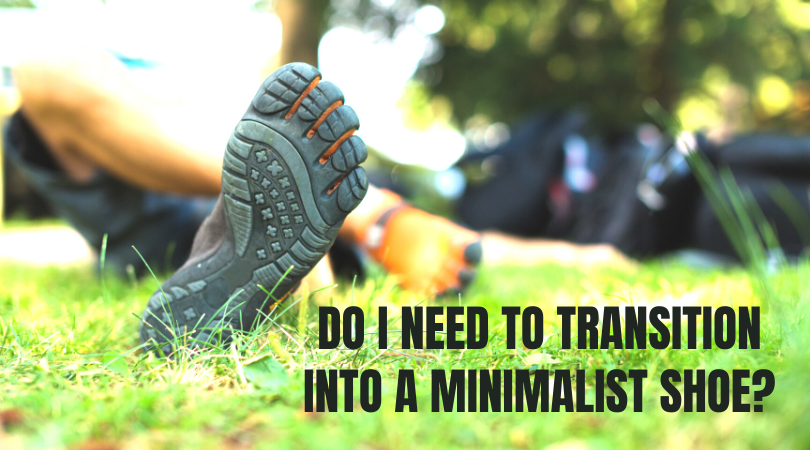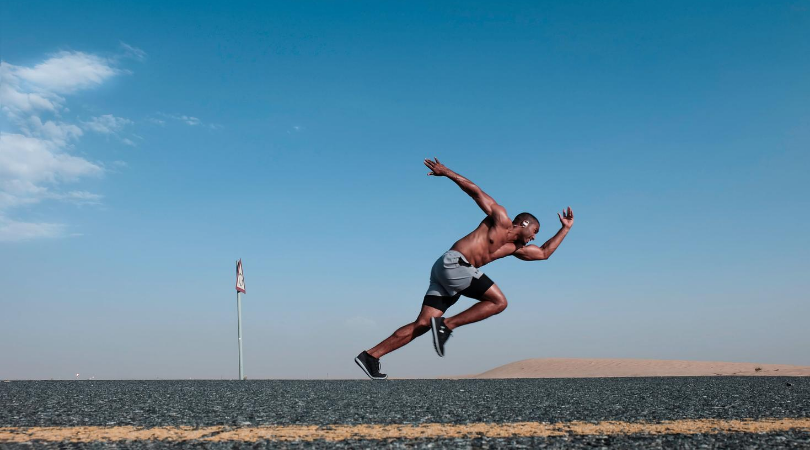Do I need to transition to a minimalist shoe?

Firstly, what is a minimalist shoe? Well, this is a shoe that attempts to mimic barefoot function as closely as possible. This usually means it is accompanied by light material and offering less support. Because this leads to confusion, the ‘minimalist index scale’ was created. I want to give a big thanks to the team at The Running Clinic, because they created this spectrum, the rating scores and do a fantastic job at explaining it’s function. You can visit their website here.
There has been plenty of debate around barefoot running over the past few years and there are strong believers in both camps. I have heard runners ask, should I run in comfortable, supporting, protective shoes? Or do I run in light minimalist shoes and let my feet do all the work? Well, the answer to these questions will depend on several factors, including your your strength and your current running goals. However I like to simplify this dilemma and ask you two questions.
1.) Do you want to improve my running performance?
2.) Are you currently injured?

Minimalist shoes on running Performance
If you answered yes to performance then you might consider carefully transitioning to minimalist shoes, or at least have a pair to rotate with your traditional shoes. Because we are discussing performance, we need to consider your running economy. Practically speaking, your running economy means you are spending less energy to achieve the same running speed. This is a huge advantage!
To support the theory that minimalist shoes help performance. Studies like Hoogkamer, 2016 conducted tests, measuring runners in different shoes at a 5k time-trial speed. Surprisingly, the study found that for every 100g that was added to the shoe weight, the athlete decreased their running economy by 1.11%. Just think about the difference in your running economy if your shoes are 200-300 grams heavier!
There are other research examples that support this claim. Fuller and colleagues allocated 61 runners into 2 groups. A minimalist shoe group and a traditional shoe group. This meant that both groups would follow the same 6-week training program, but one would group slowly transitioned to minimalist shoes. As a result, they concluded that the minimalist shoe group improved their running economy more than the conventional shoe group during a 5km time trial (on treadmill). These claims are supported by several other studies which show a correlation between shoe weight and running economy.

Minimalist shoes on running injuries
A nice systematic review conducted by Warne & Gruber in 2017 titled: Transitioning to Minimal Footwear: a Systematic Review of Methods and Future Clinical Recommendations found out of 10 studies that fit their criteria, five observed more injuries in a minimalist footwear group, one observed more injuries in the traditional shoe group and four did not observe any difference in injuries between groups. Puzzling right? The minimalist shoe group did have greater risk of injury development if body mass was above 71.4 kg. And from my understanding of load management, that seems to make sense.
Clinically, it seems that transitioning to minimalist running shoe will increase the demand on the muscles, joints, tendons located below the knee.
This could be a good thing, because if you transition gradually, these structures will actually become stronger and more resilient. It also seems that these shoes reduce joint forces at the knee, the most common location for running injuries. This is in part due to adjustments in foot contact and cadence when adopting a lighter shoe.
Methods to transition into a minimalist shoe
The method and timeframe to transition shoes is open to debate. As I mentioned earlier, shoes fall on a minimalist index spectrum, so it will depend on the leap you take from one side to the other. Other factors include your history of injuries, your strength, running style, the list goes on! I will try my best to provide some generic guidelines.
- I suggest that a transition period of no less than 4–8 weeks should be used because of general muscular adaptation to training, taking this period of time.
- Given the dramatic change in the demand of the foot structure and musculature with minimalist shoes, a period of preparation could include some light walking and every day, non-uniform loading whilst wearing minimalist footwear or going barefoot may be of benefit before any running activity has begun.
- I suggest that the initial overall running volume is decreased in the region of 10–20% in the first 2 weeks, in order to reduce the risk of this bony injury from unfamiliar repetitive loading.
- I suggest a hybrid approach—e.g. “10% of your daily running volume, up to a maximum of 10 minutes”—that is increased by 5–10% per week.
- Females and heavy males >85kgs should perhaps consider a more conservative programme. Using a screening protocol to determine high-, moderate-, or low-risk participants, clinicians may be able to individually prescribe the exposure to minimalist footwear.
- It is suggested that some proportion of running takes place in different footwear, and on numerous different surfaces to help develop the ability to deal with multiple stressors in a variety of environments. This way we may be able to develop more resilient runners and combat the dramatic injury rates seen today.
Relevant Blogs:
Should I listen to running shoe fads?
Shoe prescription misconceptions
Relevant Podcasts:
Is a carbon fibre shoe right for me? With Simon Bartold
Using shoes as tools to overcome injury? Matt Klein
Is there a right & wrong running shoe? With JF Esculier
References:
The Running Clinic Minimal Index
Joel T Fuller et al. Six-week transition to minimalist shoes improves running economy and time-trial performance (2017)
Matthew J Salzler et al. Injuries observed in a prospective transition from traditional to minimalist footwear: correlation of high impact transient forces and lower injury severity (2016).
Warne & Gruber. Transitioning to Minimal Footwear: a Systematic Review of Methods and Future Clinical Recommendations (2017).
Hoogkamer et al. Altered Running Economy Directly Translates to Altered Distance-Running Performance (2016).
